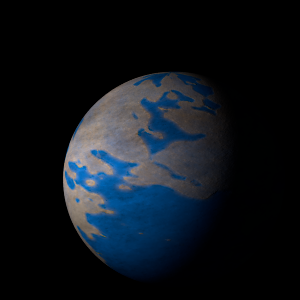|
|
Space Astro
|
Info for exoplanet "Lenefar"
| Scientific (actual) data |
|---|
| Name | TOI-1052 Ac |
| Planet status | Confirmed |
| Mass sini | 0.1079 |
| Orbital period | 35.806 |
| Semi major axis | 0.2263 |
| Orbit eccentricity | 0.237 |
| Discovered | 2023 |
| Updated | 2025-08-02 |
| Omega | 315 |
| Tperi | 2459430 |
| K | 6.11 |
| Temperature (kelvin) | 719 |
| Publication | Published in a refereed paper |
| Detection type | Radial Velocity |
| Mass measurement type | Radial Velocity |
| Alternate names | HD 212729 c |
| Star name | TOI-1052 A |
| Right ascension | 337.51° |
| Declination | -75.65° |
| Mag v | 9.5 |
| Star distance | 128.7 |
| Star metallicity | 0.14 |
| Star mass | 1.204 |
| Star radius | 1.264 |
| Star sp type | F8V |
| Star age | 2.3 |
| Star temperature | 6146 |
| Star alternate names | HD 212729 |
| Wikipedia article | TOI-1052 Ac |
Back
| |
| Fictional info (?) |
|---|
| Suggested name | Lenefar |
| Planet type | Cold planet |
| When viewed from Earth, this proximity to TOI-1052 A means the planet can only be seen near the western or eastern horizon during the early evening or early morning.
A prominent result is the "great green spot", a giant storm that is known to have existed for centuries since it was first observed by radar.
This nice place is mostly occupied by friendly earth-like plants, the "Aeuan Ede", which feed by finding nourishment in the Thrymr-tayal plant in the shade. Aeuan Ede are related to Sycodenoe and have 6 arms and vary in size from 80 to 160 mm. The Aeuan Ede are known to endure temperatures from -50 to 10°C and sometimes intense weather. |
| Estimated population | 14000000 |
| Atmosphere | Carbon dioxide | 93% |
| Oxygen | 5.8% |
| Water | 0.15% |
| Methane | 4.6E-5% |
| Atmospheric pressure | 30 bar |
 |
| No known satellites |
| Google search for Lenefar |
|
Website by Joachim Michaelis
|
|
|
|